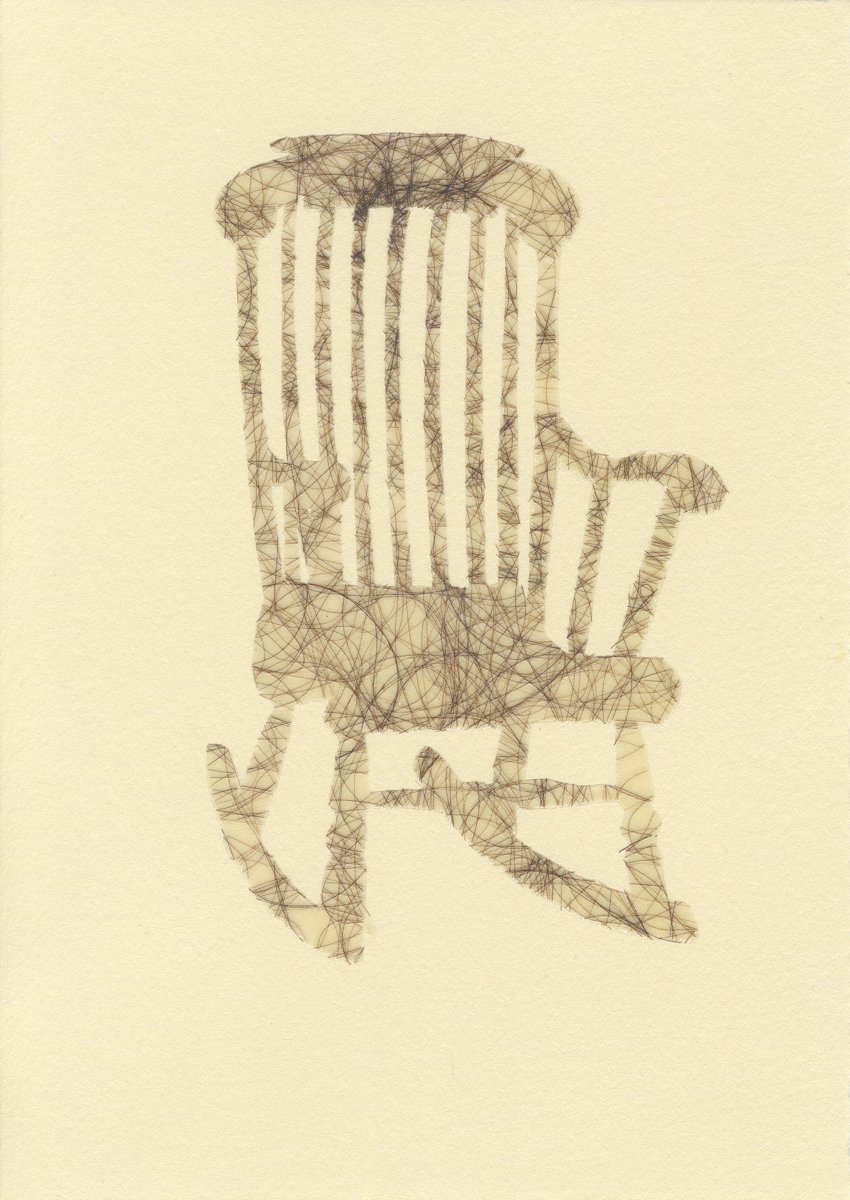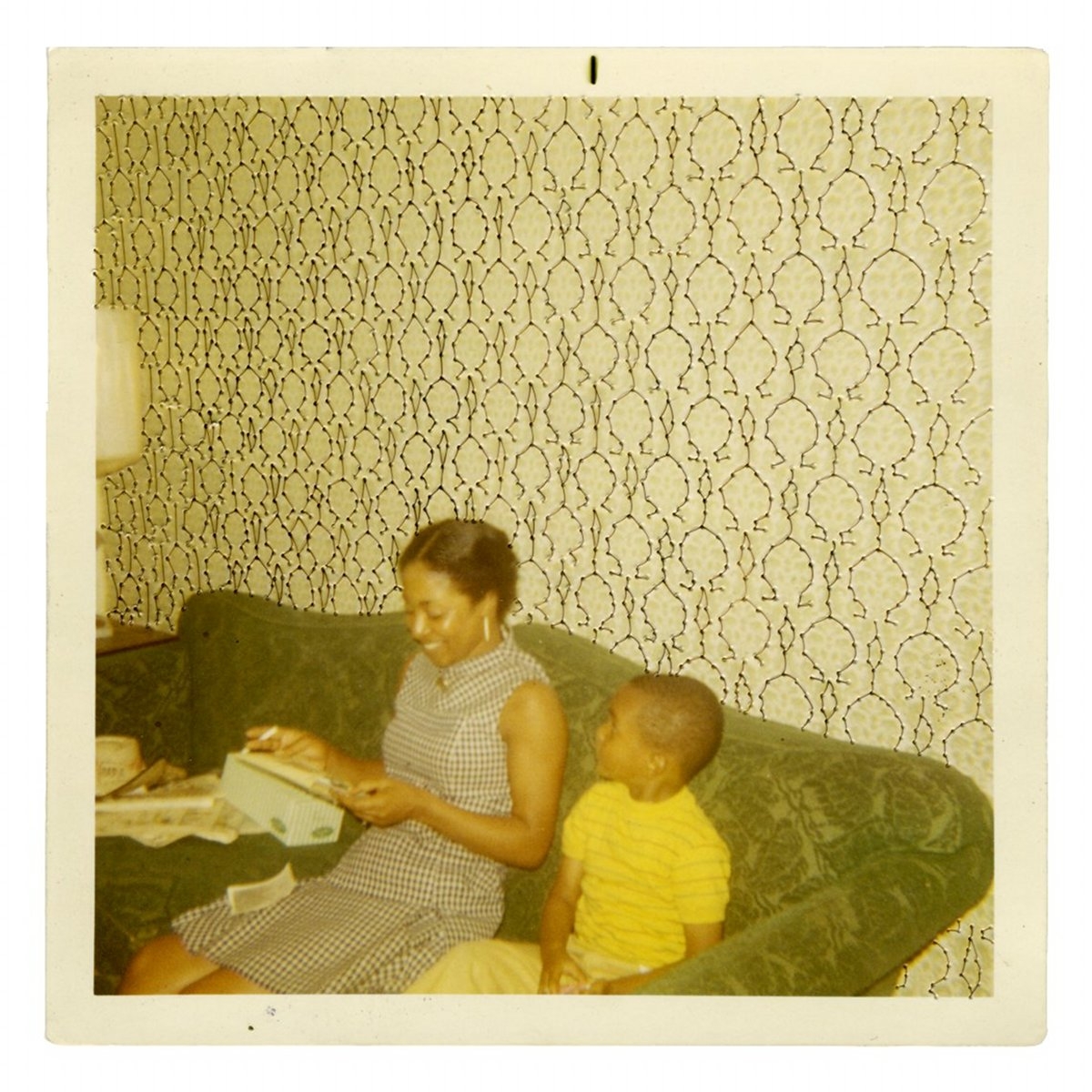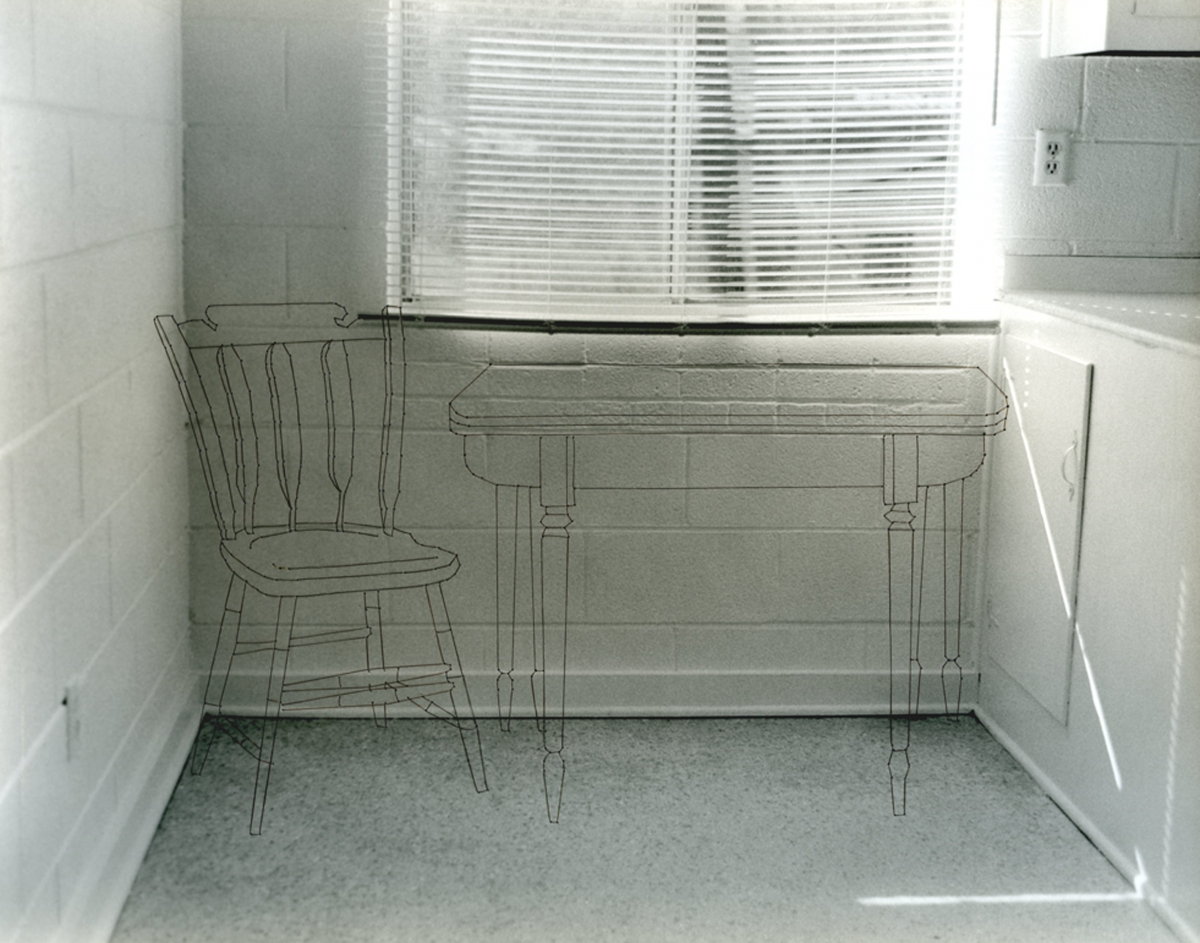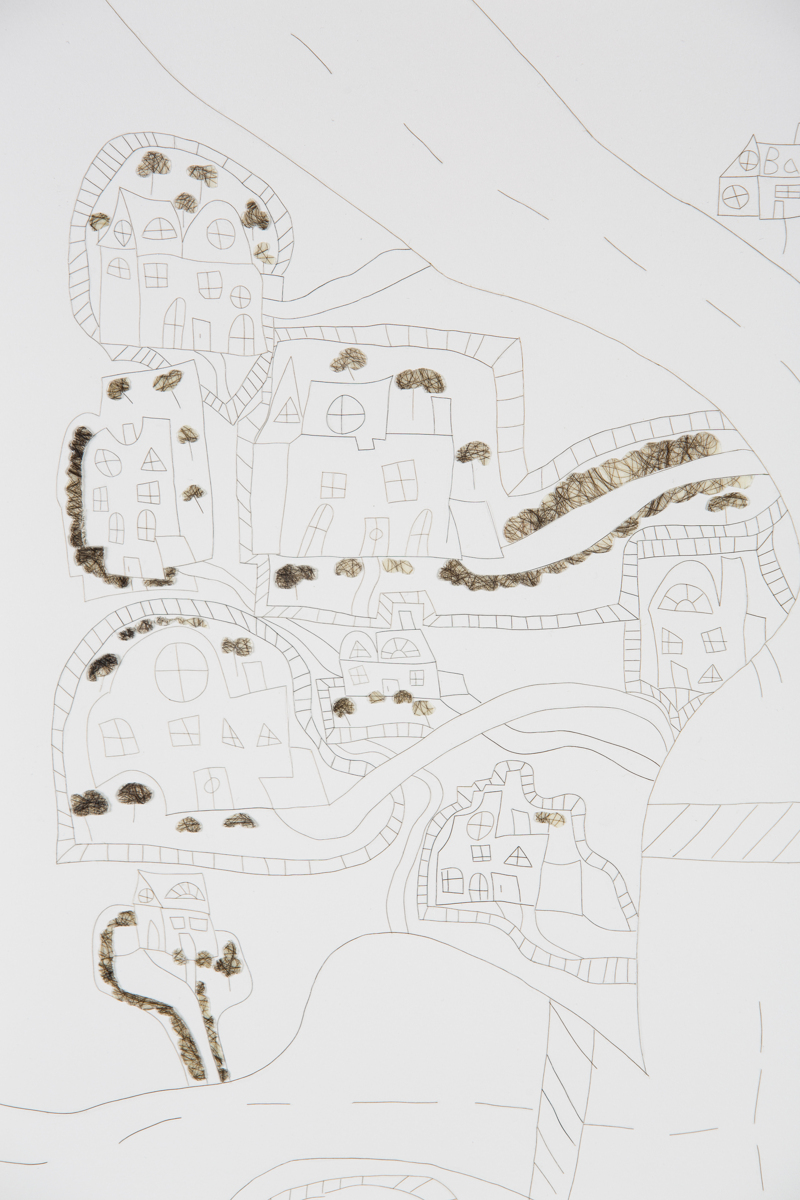Artspan sits down with Brenna K. Murphy
You use human hair as your medium, which seems surprising and unusual, at first, but actually has a place in art history. I’ve seen Victorian art and jewelry made with the artist’s hair, which seems like an incredibly personal way to express oneself. Was this a tradition you were aware of when you started working with hair? Have you discovered other examples of artists working with hair throughout history or in your travels?
I was relatively unaware of how hair has been used in traditional craft-work and contemporary art when I first began using it in my own work, but once hair became a part of my practice, I began learning a lot about its history in art. Victorian hair jewelry and funeral wreaths were some of the first hair art-objects I encountered, and I've been in love with them ever since. There is a museum in Missouri, Leila's Hair Museum, that I am dying to visit - they have a huge collection of Victorian era hair work and they offer workshops on the techniques used to make these incredible objects.
Of course, the Victorians weren't the only ones using hair in the creation of art objects - many other cultures have used hair in various ways as well. And in contemporary art, it is more common than one might think. Whenever I give an artist talk or lecture about my work, I always end with a list of several contemporary artists that use hair in their work, including Anne Wilson, Lorna Simpson, Wenda Gu, Melanie Bilenker, and Elena Fajt.

How do you prepare hair to be used in your art? Do you card it and spin it like sheep’s wool? How long does hair need to be for you to use it?
Generally, I don't have to do much to prepare the hair before I work with it because I usually use single strands of hair. When working with these single strands, it is easier if they are straight and long (12 inches or more), as they more easily behave like 'threads' for embroidery work. (One of the many reasons I wear my own hair long and refuse to cut it!) But I can usually make curly and/or short hair work - it all just depends on the nature of the piece. I've made commissioned works using the hairs of other people that are short, and the only real consequence of that was the process of creating those pieces becoming a little slower than usual.
I've also had my hair spun into a kind of 'yarn' many years ago, by a fiber artist who worked at a yarn store in North Carolina where I was living at the time. I used this 'hair yarn' to make a cross-stitched piece - it was a bit fickle to work with and broke relatively easily, but ultimately it worked! I've also experimented with glues and hairspray to manipulate hair in a more sculptural way here and there, but that kind of work hasn't become a large part of my practice.
You might be among the most well-travelled of our Artspan members. Where are some of your most favorite and least favorite places that you’ve visited? You’ve travelled on various art programs and residencies. Do you have any advice for other Artspan members on methods to use your art to fund your travels?
This is a really tough question! Each place I've traveled to has its own set of positive and negative characteristics, it feels almost impossible to pick a favorite! I'm currently on a two-year stint in Kathmandu, Nepal and it certainly has its own charms and challenges, especially now after the recent earthquakes. And two years ago, I lived in France for a total of six months - it too full of ups and downs. If I was absolutely forced to pick a favorite, I suppose it might be Marseille, France because it's a gritty urban city set in a beautiful landscape, the weather is amazing, the food is ridiculously good, and it's a really diverse place with people from all over the world living there. I was only there for a week or so, but it was enough to convince me that I would jump at the opportunity to live there someday if possible. But then again, there are so many places I visited and loved - I'm sure I'd live in those places too if the opportunity came my way!
I think artist residencies are a really great way to travel, and I highly recommend the experience to anybody considering the possibility. It's not always easy to take large chunks of time away from your own life, and funding is certainly an issue, but it's worth it if you can manage to get out there! I've met many wonderful artists at the residencies I've attended and made some of my best work while working in residence. Having time and space dedicated solely to the creation of your work is so valuable - we all know how easy it is to get lost in the distractions and 'To-Do' lists of our daily lives. If you do find yourself headed out to an artist residency, I strongly recommend going for a minimum of two months if possible - one month residencies are tough because as soon as you've settled in and really start getting some good work done, it's time to go! (And you'll want to have sufficient time to explore the place your visiting as well!)
Regarding funding, applying to residencies that offer scholarships/fellowships is a good way to go, but of course, those residencies are generally pretty competitive. When I took a year off from my day-job as a preschool teacher in Philadelphia two years ago to travel to various artist residencies around the world, I used a combination of personal savings, scholarship money, and crowd-sourcing to fund my travels. You'd be surprised to see how many of your friends and family are happy to chip in some cash to help you realize a dream.
Everyone gets a question from the Proust Questionnaire, and here is yours… Where would you like to live? (and it doesn’t have to be an actual place, here’s Proust’s answer, “A country where certain things that I should like would come true as though by magic, and where tenderness would always be reciprocated”)
This is another tough question, especially for me, as I've been a bit of a nomad pretty much since birth (my family moved eight times and lived in six different states throughout the U.S. by the time I was eighteen years old). It's difficult to pinpoint a specific place where I would want to live at this time in my life, but I must say that I do have a pretty strong love affair with Philadelphia, where I've lived for the past 10 years (the longest I've ever lived anywhere in my entire life!) I'd love to move back there someday - it has a great, accessible art scene, the cost of living is reasonable, it has beautiful parks, there's an incredible restaurant/bar culture, and its easy to reach other great cities like New York and Baltimore. I guess it's fair to say that, in general, I prefer urban environments and hope to settle down in a city somewhere in the States (or maybe somewhere in Europe, preferably France - a little 'pipe dream' of mine).
If I were to take a cue from Proust in answering your question and imagine a place that doesn't necessarily exist, I'd say that I would like to live in a city that is clean, has good public transportation, excellent parks, interesting arts and academic culture, a great food scene, and a diverse population in which ALL of my family and friends could live - every last one of them! My network of friends and family is so scattered at this point - it's really tiring to miss all of them so much all the time. In a perfect world, I'd live in a place where that wasn't a concern for me because they'd all be right there with me! And this imaginary city would also be (miraculously) only half an hour away from both the beach and the mountains, as I love to venture out into the wild from time to time, and would definitely want natural environments easily accessible for hikes, beach excursions, and camping trips.

Your work seems to frequently focus on the concept of “home,” which is a word that fascinates me. We have so many adages about home…where the heart is, where they have to take you in, where you hang your hat. If you had to write an adage about “home,” what would it be?
I've actually already written, or rather, rewritten my own adage about Home - "Home is where the hair is." I titled my first body of hair art with this adage back in 2004 - a professor of mine at the time jokingly made the pun when we were discussing my developing work and it stuck. It's funny and a bit silly, but it also gets at the idea I was working with at the time: the idea that our bodies are our original sense of place - our original sense of 'Home' that is rooted in something physical/tangible- and that it's all we really need to feel 'at home,' no matter where we find ourselves in the world. Of course, this idea has failed me in a lot of ways in my personal life, and a lot of my art has come from that struggle - me wanting to believe that my body -my own self- is enough to feel like I have a 'home,' but ultimately feeling that it isn't really enough and that I do still long for a 'hometown,' a house that I grew up in, and all of those other physical/geographical/tangible things we generally associate with 'Home' in Western culture. I wish it was as easy as "Home is where the hair is," but I know in my heart that, for me, it's not that simple.
In briefly studying both French and Nepali, I've been fascinated to learn that there isn't really a direct translation for the word 'Home' in either language. Of course there are words for 'house' or 'residence,' but as far as I know, there isn't a word for the concept of 'Home' in the larger, emotional/sentimental sense. I wonder what this indicates about these various cultures, if anything, and I wonder how many other languages don't have this word. I do believe that the larger, emotional concept of 'Home' is more or less universal, but clearly it is thought about and talked about differently in different cultures - I'd like to explore that further in my work, but I'm not quite sure how just yet!
Sign up for our email list
Find out about new art and collections added monthly



